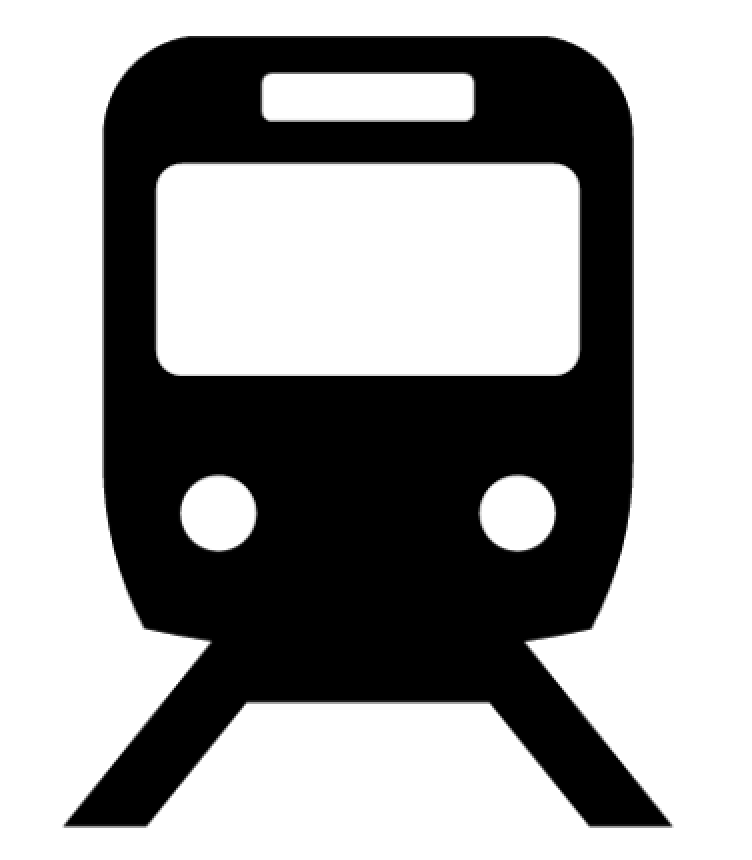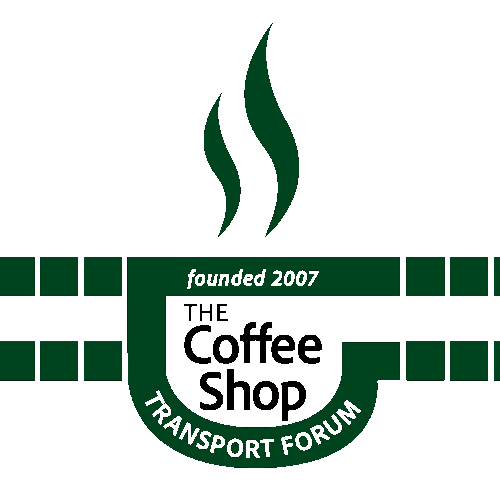| Re: How to increase Melksham Station call frequency without new bridge and lift Posted by ChrisB at 18:00, 16th November 2025 |     |
S106 payments should be able to generate the cash needed, if the council planners get their decisions right
| Re: How to increase Melksham Station call frequency without new bridge and lift Posted by grahame at 12:18, 16th November 2025 |     |
Some really interesting thoughts here and there is no magic answer that ticks all the boxes - there will be some compromise, perhaps in extremis either spending more money than we would like on a near-perfect solution, or minimal money in railway terms on patching things up.
1. An intermediate signal (in each direction - so two of them?) to allow train flighting might help at times but I worry about how this would work without the capacity to hold trains waiting for their flight on the min lines, and whether it might present more troubles than it's worth in terms of the extra hassle it would produce back to Swindon and Westbury to build the flights. I also worry that by the time the first train in a flight has cleared the intermediate signal and section, it will only be a few minutes short of the time it would take to be clear of the whole line anyway, and the gain would be relatively small - granted for the smallest of investments being discussed. I might be more tempted to seriously consider this option if it were extended to two intermediate signals in each direction; assuming we are still using line-of-sight signalling, extra intermediate signals would also reduce the instances of passing single yellow aspects some miles ahead and having to slow down on the approach to potential red signals which in most cases would have cleared before they are reached anyway.
2. A (train length plus delta) loop away from the intermediate station has me thinking "like Tisbury" where, when a train is looped, it adds significant running minutes and can irritate the **** out of passengers too - headed home - destination Tisbury, and people are sitting outside the platform for perhaps 5 minutes and get a bit antsy about it. Tisbury has a population just one tenth of that of Melksham - a different oder of magnitude. And with that loop away from the platform, two passenger trains passing each other are going to be a few extra minutes apart - sequential rather than parallel calls - which adds to the elapsed time a bus would need to sit at the station between dropping people off for the first train and picking them up from the second. The Axminster lesson might be used - where the bus in that dead time serves places so close to the station that people would realistically walk from there to the train, but that solution degrades the passenger experience of arriving on the train at Melksham on the (first arrival) train and having the comfort of the bus being there and waiting.
3. Rail operationally, loops near the Lacock or Staverton end - or both - would be enormously helpful. The ability to hold trains off the main lines - be it waiting for a slot on the main line, waiting for a slot on the single line, or for having a faster train passing a slower / out of slot one would be marvellous. The concern remains about the gap between the passenger train calls in option 2 - perhaps the more so as the gap in minutes between the calls in the two directions gets longer, and could move us to having to make a choice as to which connections to make or optimise, and which to leave as missed connections.
4. An extended platform at Melksham, with a loop from the centre of that platform allowing trains to arrive in two directions at the same time and both undertake station duties at the same time, with no outside the station waiting and extra delay, with one departing around the loop to bypass the other. This makes sense to me - there is the extra cost of a platform extension but no bridge, no lifts needed. (Example above - Bad Doberan and Penryn)
5. A second platform at Melksham, on the other side of the tracks, with a loop allowing trains to pass at the station. Bridge and lift costs likely to be prohibitive, but if the second platform had an independent entrance off the upside yard, or off Shurnhold, that expense could be spared. In essence a northbound and a southbound stations at quite some walking distance from each other. Issues for people on return trips - which station to park their car / leave their bicycle at, and which station to bus-serve. The continentals way of doing this is to have both lines of the loop bidirectional and to use the "outer/remote" platform only for the quieter or two trains when passing. So with main flow being day journeys to Chippenham and Swindon, morning trains northbound and afternoon trains southbound would all call at the same platform. (Example above - St Budeaux)
6. An arrangement like (example above Limerick Junction) where the main line runs past Melksham away from the platform, and two loops are provided to bring trains into the longer platform and/or to pass. "Left field" idea - but not ruled out for the sake of this conversation. Many similarities to option 4, but it would additionally allow for either train to arrive and / or depart first, and also for freight trains and diverted expresses to bypass passenger ones
7. Two loops and / or dynamic loops - at or near the station and extending most of the way from just south of Thingley Junction as far as the bridge over the river Avon at Staverton. A whole series of sub-options here and these are not the cheapest but they are long-term better that any of the earlier options. The original infrastructure was 2 tracks broad gauge so there should be space, though remedial action might be needed to move the current line to the side again, and to wider cuttings, embankments and bridges that have degraded. Concern again about bus connection timing and also access to a second platform if the loop also continued through the station - see earlier options
8. Redouble the whole line, and / or with single or double junctions at the ends. A double junction at Bradford South Junction is feasible. At Thingley junction, the cant on the Chippenham via Corsham to Bath line to ease speed restrictions on the curve would require looking at a may be an insurmountable problem. But then all expresses have just stopped or are slowing down for Chippenham anyway and acceleration from slacks is far better than it used to be - so something to think about?
9. For completeness only I have disregarded picture examples from Klaipeda, Rovaniemi, Rynbista and Turzovka pictured above, as I see level crossing of pedestrians over the track as something that would not be allowed, and bringing in two trains end to end and swapping over all the passengers as inappropriate where there are so many through passengers - even though it is done at Ormskirk in the UK.
A view to consider the future - beyond the current election cycle and control period - to what's needed in the future. Call it Crayonista if you like. Housing uplift in our area is going to bring many more residents and without huge expenditure it won't bring for roads. £250 million for a Melksham bypass, perhaps the same for a Westbury bypass, and none of that starts to address the clogging of traffic into Bath and Bristol. Add to that Chippenham Dualling costs, Yarnbrook improvements, and you'll soon be approach a spend of a billion pounds.
Where is the extra housing to go? Suggestions on the current infrastructure have commented about new stations at Corsham, Christian Malford, Thingley Junction, Lacock, Holt and Staverton. There is some sense in providing at least passive provision to allow trains from Melksham to once again run direct via the Bradford North Curve - removed as late as 1990 - to Bradford-on-Avon, Bath and Bristol; there may also be sense in re-instating the south to west curve at Thingley which was lost many years ago. The biggest flows from Melksham overall (road and rail) are to Bath, and a train every 30 minutes to Bristol - alternately via Bradford-on-Avon and Corsham, with these trains passing the hourly Weymouth and Westbury to Swindon and Oxford, and Oxford and Swindon to Westbury and Weymouth services respectively may be something we see in the next decade. That would put the town bus that connects with the trains up to every 30 minutes in a major boost of local use too. Please - let's not due anything stupid that we regret later because it rules out future visions.
| Re: How to increase Melksham Station call frequency without new bridge and lift Posted by John D at 10:24, 15th November 2025 |     |
Some interesting examples.
Personally I believe the best option is a loop away from the station itself. Given the length of some freight trains you would very quickly be outside the station limits if sited there. An ideal location would be near either end of the single line. This would have the added benefit of being able to get a train off the main line to prevent it blocking the path of other services while it waits for a slot through to the other end.
At the very least an intermediate signal between the junctions so trains, in the same direction, could be "flighted".
Of course the perfect solution would be double tracking throughout....
Personally I believe the best option is a loop away from the station itself. Given the length of some freight trains you would very quickly be outside the station limits if sited there. An ideal location would be near either end of the single line. This would have the added benefit of being able to get a train off the main line to prevent it blocking the path of other services while it waits for a slot through to the other end.
At the very least an intermediate signal between the junctions so trains, in the same direction, could be "flighted".
Of course the perfect solution would be double tracking throughout....
Yes the geography is such that the ideal (assuming double track throughout is not going to happen) is 2 loops, one near Lacock, the other near the former Holt junction station.
Reasoning is trackbed is easiest to do at these, remember it was originally broad gauge double track, so not a case of squeezing a track in. And don't want to add tracks where it has been slewed under centre of old arched bridges.
I think current policy is to build freight loops suitable for 775m long trains, so roughly half mile long loops. Can either built them as reversible loops with slow speed junctions, (waiting train uses them, other train passes at speed), or as short double track sections. The former needs more signals, the second is speed restrictive both directions unless long faster points are installed.
My gut feeling is having a loop at Melksham station and building a fully accessible two platform station might will cost more than two loops where space exists.
| Re: How to increase Melksham Station call frequency without new bridge and lift Posted by Oxonhutch at 09:55, 15th November 2025 |     |
1 is Limerick Junction, post the 1967 alterations I think looking at the converging paintwork in the extreme right.
A complication here was that all trains had to reverse into their respective platforms.
| Re: How to increase Melksham Station call frequency without new bridge and lift Posted by bobm at 09:44, 15th November 2025 |     |
Some interesting examples.
Personally I believe the best option is a loop away from the station itself. Given the length of some freight trains you would very quickly be outside the station limits if sited there. An ideal location would be near either end of the single line. This would have the added benefit of being able to get a train off the main line to prevent it blocking the path of other services while it waits for a slot through to the other end.
At the very least an intermediate signal between the junctions so trains, in the same direction, could be "flighted".
Of course the perfect solution would be double tracking throughout....
| How to increase Melksham Station call frequency without new bridge and lift Posted by grahame at 09:00, 15th November 2025 |     |
Bridges and lifts at stations are expensive to provide - but if we want to increase the number of trains calling at Melksham, a single line all the way from the outskirts of Chippenham to the outskirts of Trowbridge won't pass muster. Here are various ways from around Europe - including tbe British Isles - that multiple services can call at stations in each direction at more or less the same time. Some of these would have the powers that be throwing their hands up in horror. Others are not very passenger friendly. But there are some that are proven to work in a British environment.
Two tracks (i.e a passing loop) with a diamond crossing to bring each to a long platform
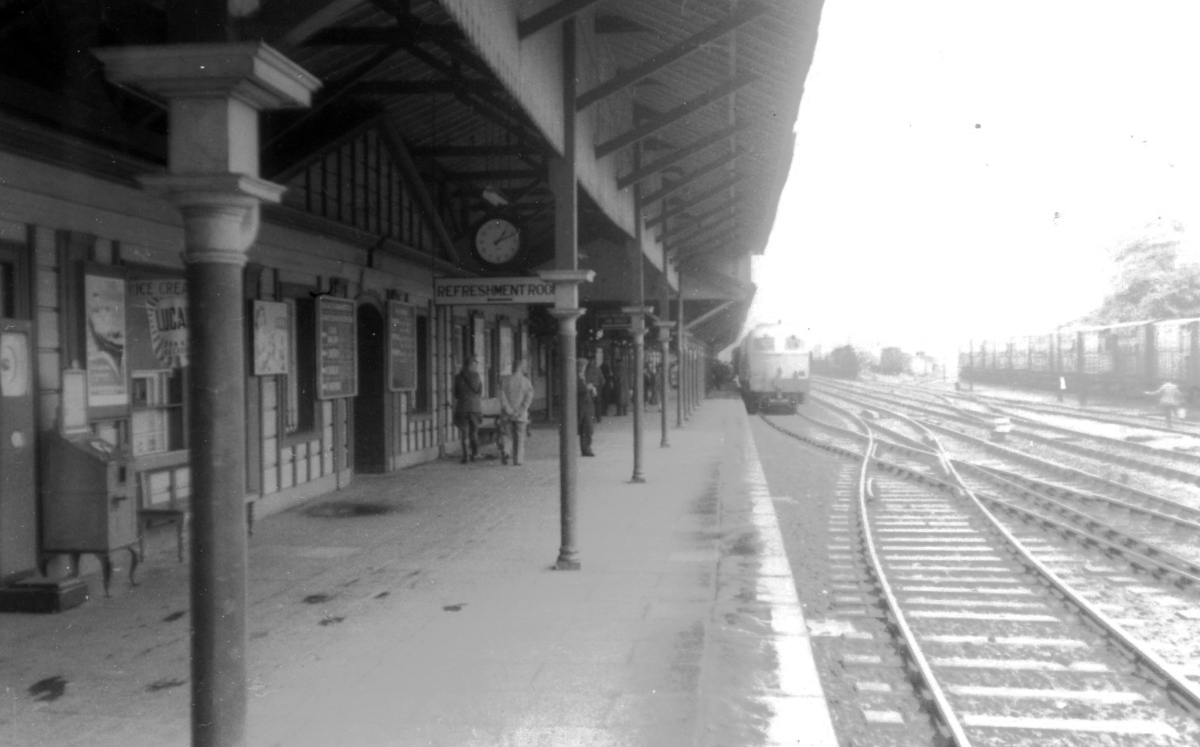
Limeric Junction - picture no. 1
A narrow outer platform used by the train which is going to have least passengers joining
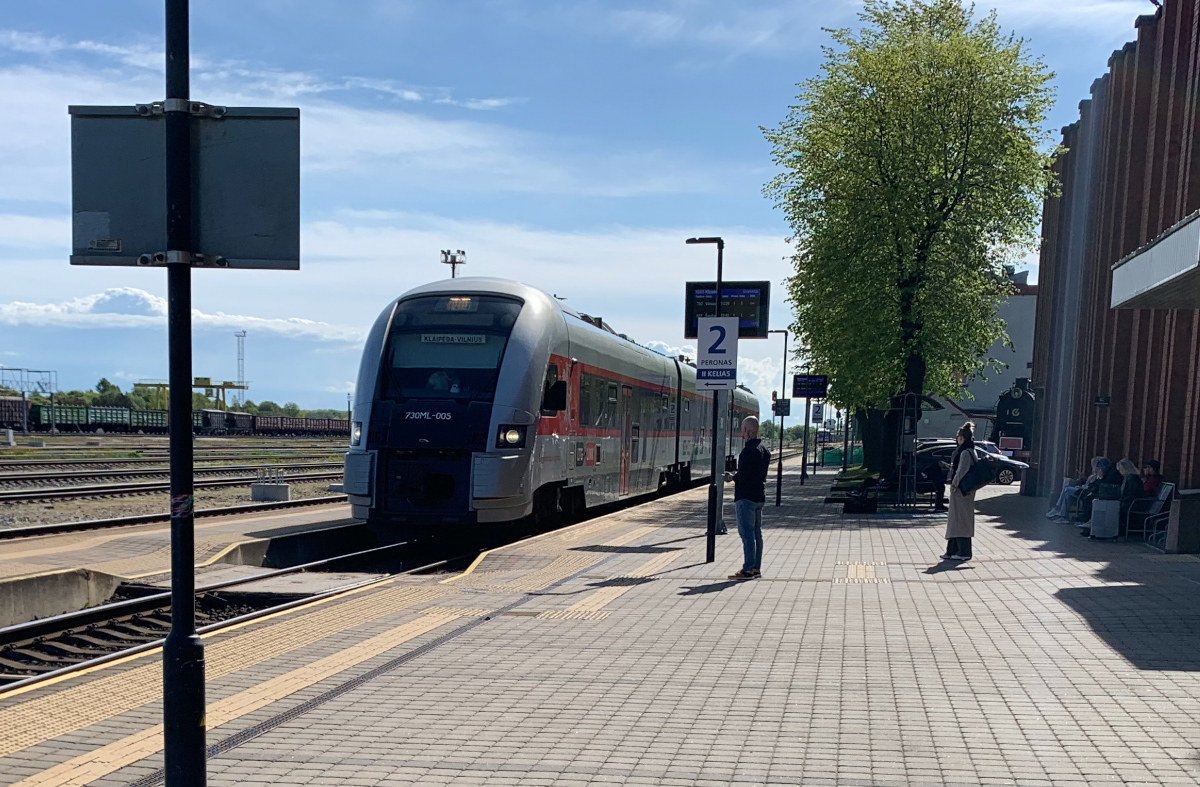
Klaipeda - picture no. 2
A long platform with a loop past one half. Train arrives into looped platform, second train arrives into other end then leaves around loop, first arrival then carries on
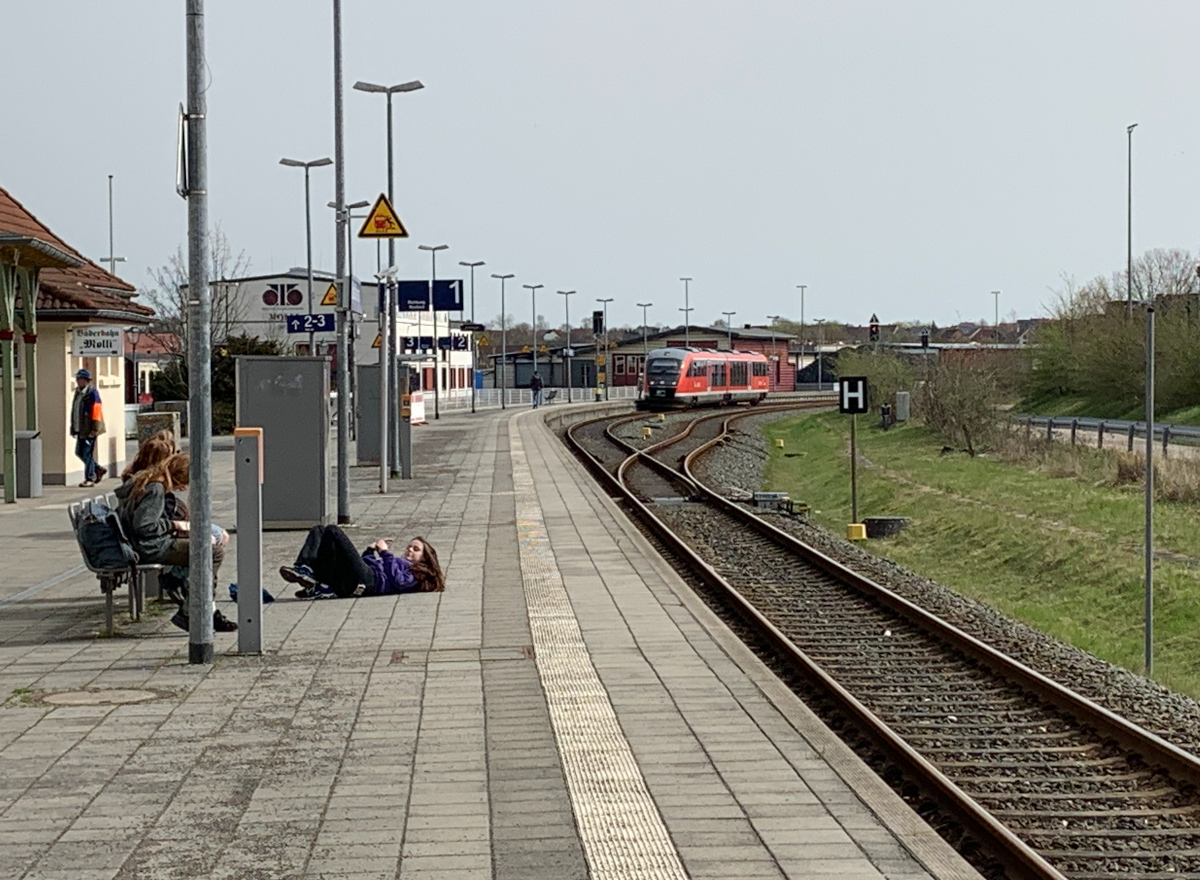
Bad Doberan - picture no. 4
Ditto - but British example showing that this CAN be done in the UK. And there would be space at Melksham

Penryn - picture no. 3
Another example of an outer platform with a flat crossing - in this case the second platform is much wider

Rybnista - picture no. 5
Where more passengers will cross the line, level crossing barriers can be provided and that's sometimes doe for a significant number of passengers.

Rovaniemi - picture no. 6
Single platform and bring in two trains end to end, have all the through passengers swap over, and then both trains go back whence they came. There is a British example on the Great Orme Tramway, and an example of passenger swap both ways at Mockava.

Turzovka - picture no. 7
Have a platform on each track, but simply use a slope up to an existing bridge that carries a public road / right of way for passengers to cross over.

St Budeaux Ferry Road (and Victoria Road) - picture no. 8
